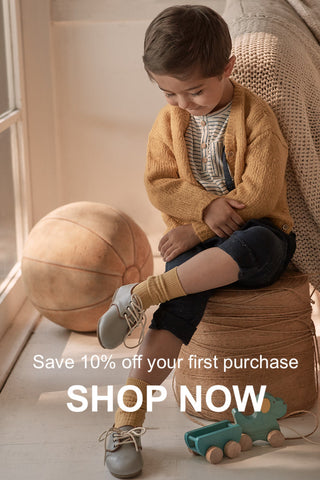
When Will Your Baby Start Walking? When Should They Walk? Baby Walking Guidelines
How Your Baby Learns to Walk: What is normal and what is not?
All parents can’t wait to see their baby’s first steps. This special moment is usually said to happen somewhere close to a child’s first birthday (i.e., when they turn one year old). Naturally, when it doesn’t, many parents start to be concerned that something might be wrong with their child or that they have issues. Parents really need to understand that while 12 months is a common age for walking, babies who don’t walk by age 12 months are usually not experiencing any sort of motor or developmental delay.
Save 10% off your first purchase. Use code WELCOME20
Most therapists typically tell parents that children may walk independently anytime between 9 months and 16 months and still be considered “just sorta developing”. Typically, parents and physical therapists would only want to take a look at a child if they are 15-16 months old and not yet walking independently to determine if there is a reason the child has not taken independent steps and may perhaps benefit from therapy to help him along.Many people think that learning to walk is just matter of just balance, muscle strength and coordination. However, there is a lot more to it as muscle tone as well as a child’s temperament and general attitude / desire may also play a role. Some children tend to be more active and impulsive which then leads them to sometimes walk earlier than children who are laid back and easy going who may decide, let’s just leave it for a bit, but that is not always the case. Some people say that children who are early walkers can be more accident prone and later walkers may be more cautious, but that is not consistent, for perhaps an over generalisation. The truth is that all children are different. Children with high or low muscle tone may have more difficulty with walking and gross motor skills in general.
Once children do begin to walk many parents may notice and sometime be concerned about their children’s feet turning slightly outward or inward. Usually, this is not an issue and a child’s gait will straighten itself out by around age 3. However, if your child continues to trip and fall due to feet turning inward/outward when they are older, then you may wish to consult a physical therapist or doctor.
Unlike adults, young children do not develop much of an arch and are relatively flat footed until they get to about 3 years old. That is also another reason some kids turn their toes inward as it helps them to distribute their weight and balance themselves while walking.
There are even some children walk on their tippy toes. This seems to be more prevalent with children who spent a lot of time in exersaucers, walkers and jumpers bouncing around on their tiptoes. Like many things, this is not typically a concern unless a child’s physician or therapist detects tight heel cords and the child cannot physically put their feet down flat, or it causes pain. Once again, best to consult a medical professional if you have concerns.
When young children begin to walk, they need what is called a “wide base of support” to help them balance, thus they will walk with arms out and legs apart and feet may be turned inward or outward. It is also best for them to either go barefoot or wear soft, thin-soled shoes, like the ones that we sell at Kit & Kate.
Here are some suggested ways to help encourage your baby to walk:
Let him or her push toys while standing. However, it can be a good idea to load push toys and carts with phone books or a bag of sugar to keep them from tipping over (and the resulting face plant!)
Overalls or clothes which a handle what parents can hold onto to are a clever way to allow you to gently (or sometimes strongly) either lift, hold back or stabilise your toddler or little as they take their first steps. This helps avoid nasty falls while allowing them a decent degree of freedom. Other ideas include using a broomstick as a sort of handrail or letting your child hang on to your knee as you walk with him or her.
While convenient, time in walkers, exersaucers or jumpers should be limited to say 10-15 minutes a day. While these devices appear helpful, they have not been proven to actuallyto help children walk any sooner. In fact, some children can actually develop their calf muscles more than quad muscles which can then lead to toe walking.
The last thing to avoid are hard soles shoes. Going barefoot, or if you want to provide some protection for their feet, soft soled shoes such as the ones that we recommend (Kit & Kate) are preferable as children learn to walk best when they can feel the floor under their feet and their toes. One favourite trick of ours is to sit some distance away from a child with a favourite toy and entice her to step towards you. Even better, try and lace low furniture close together, such as the coffee table a few feet from the couch to encourage your child to “let go” and take steps between furniture instead of just cruising beside it. The gaps help! Also, where possible do this on rugs as it helps cushion the blow if they do fall over.
Don’t forget though that these are just our thoughts on the subject. Should you have any specific concerns related to your child’s ability to walk or muscle tone then do consult your doctor for medical advice right away.



 Shoes for Baby Girls (Ages 6m to 4 years old)
Shoes for Baby Girls (Ages 6m to 4 years old)